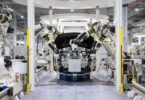Today’s cars have various features that make them more comfortable and enjoyable. But they are also increasingly connected, allowing drivers to take advantage of unprecedented convenience and control over their vehicles. One such technology is the Onboard Diagnostics (OBD) 2 system, which can be found in many modern cars and offers many benefits for car owners and service providers.
In this article, we will explore how OBD2 works, its advantages, how it can benefit automotive service professionals specifically, and why it’s widely acknowledged as one of the most important new developments in vehicle technology today.
Introducing OBD2 and its role in modern cars
Modern cars are complex machines requiring frequent check-ups and maintenance to ensure optimal performance. The Onboard Diagnostics II (OBD2) system is crucial in modern cars. The OBD2 system allows vehicle owners and mechanics to diagnose and troubleshoot potential issues inside the car. It came into existence due to the Clean Air Act of 1990, which required vehicles to meet strict emission standards.
The OBD2 system is equipped in every car produced after 1996. It consists of sensors placed throughout the car, which monitor various components such as the engine, emissions levels, and transmission. This information is then analyzed by a computer onboard, which alerts the driver of potential issues through the dashboard’s warning lights. Overall, the OBD2 system acts as an essential diagnostic tool, ensuring that modern cars maintain their performance and meet their emission standards.
Advantages of OBD2 for car owners and mechanics
One of the main advantages of OBD2 is its ability to detect and diagnose problems quickly and accurately. The system can detect issues, from minor to significant engine failures. With this data, mechanics can quickly identify precisely what’s wrong with a car and recommend suitable repairs or replacements.
OBD2 also offers car owners peace of mind that their vehicle is running optimally. By accessing data from the OBD2 system, they can ensure that their car is in good working order and detect any issues before they become more significant problems down the line.
In addition, OBD2 technology helps mechanics save time and money when diagnosing a car’s issues. The diagnostic process can be completed quickly and accurately, allowing mechanics to fix the car faster. It reduces their labor cost and the overall time needed to repair a car. At https://obdstation.com/, you can find out all you need to know about OBD2 technology.
How to set up your vehicle with OBD2 technology
If your car was produced after 1996, it should already have an OBD2 system. However, you must install additional hardware and software in your vehicle to take advantage of the system’s full capabilities.
The most common way to set up a car for OBD2 use is to purchase a scan tool that connects to your car’s OBD2 port and can access the data it collects. These tools are available in many stores or online and typically cost around $100. Once you have a scan tool, connecting it to your vehicle is as simple as plugging it into an OBD2 port under the driver’s side dashboard.
Once connected to the scan tool, you must install a diagnostic app or software on your computer. It will allow you to access and analyze the data collected by your OBD2 system. Many apps are free or cheap, so you won’t have to break the bank to get started with OBD2 technology.
Critical features of OBD2 technology and what it can do
The OBD2 system is equipped with a range of advanced features and capabilities. These include the ability to diagnose issues quickly and accurately and detect potential problems before they become serious. Additionally, OBD2 can monitor a car’s performance in real-time, allowing drivers to measure fuel efficiency and adjust their driving style accordingly.
OBD2 is also capable of issuing remote notifications. Mechanics can be notified when a car needs maintenance or repair, allowing them to schedule service visits in advance. It helps keep cars running smoothly and reduces the number of unexpected repair bills.
Finally, OBD2 technology provides an invaluable data source about a vehicle’s performance, which can be used to create detailed reports and conduct further research. This data is also helpful for automotive manufacturers, as it allows them to constantly improve their vehicles and create more reliable models in the future.
Pros and cons of using an aftermarket adapter versus a professional mechanic install
Two main options for installing OBD2 technology in your car are using an aftermarket adapter or having it professionally installed by a mechanic. The primary advantage of an aftermarket adapter is that it’s relatively inexpensive and easy to install, making it an ideal solution for those on a budget. However, it also comes with its own set of drawbacks. Aftermarket adapters are less reliable and may need to be able to correctly detect issues, which could lead to a more costly repair bill.
On the other hand, having a professional mechanic install OBD2 technology in your car offers greater accuracy and reliability. It could save you money in the long run by preventing major issues from occurring before they become serious. Additionally, the mechanic can ensure that the system is appropriately set up and calibrated for optimal performance.













